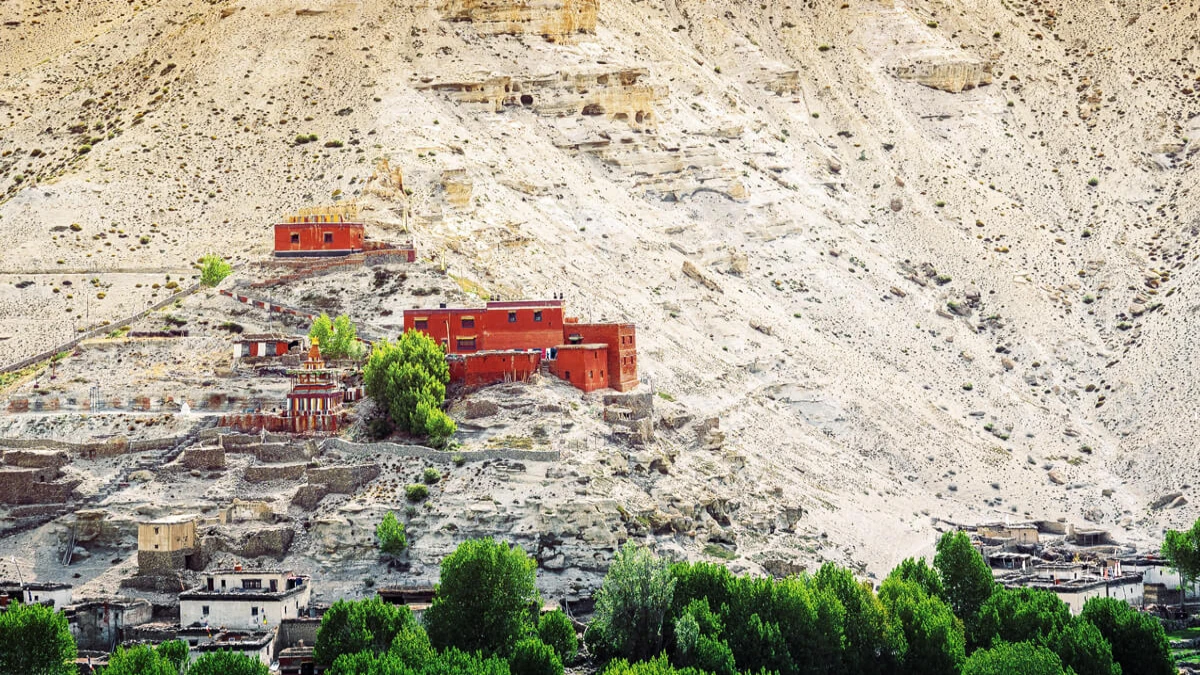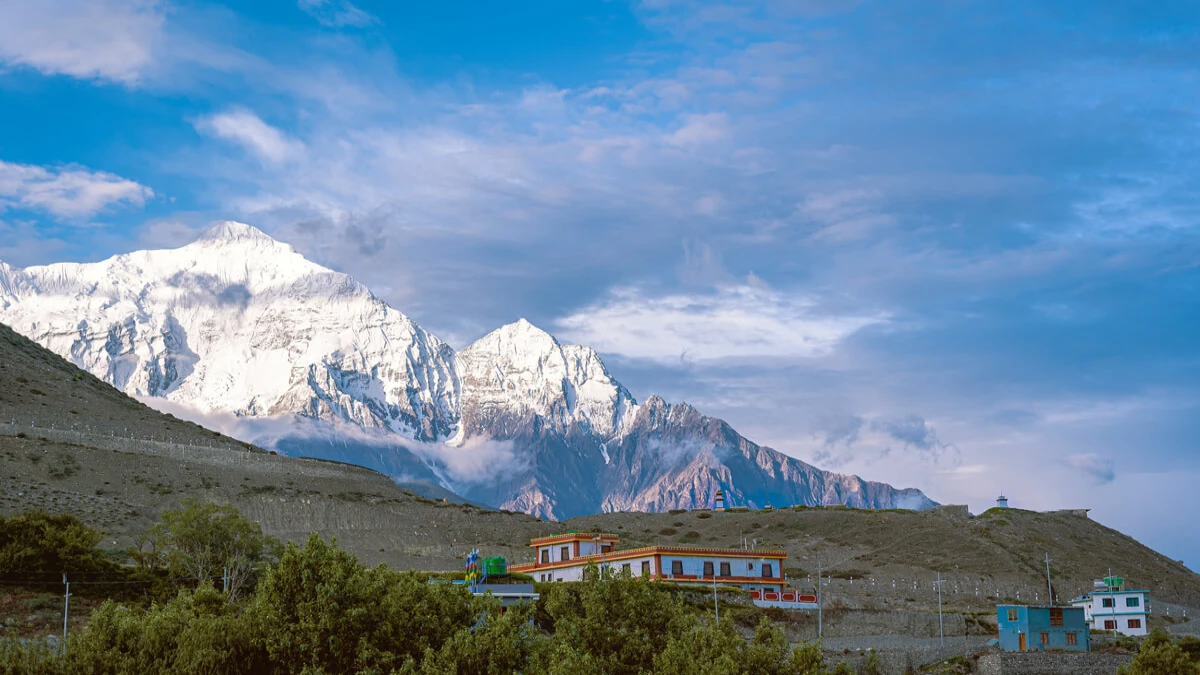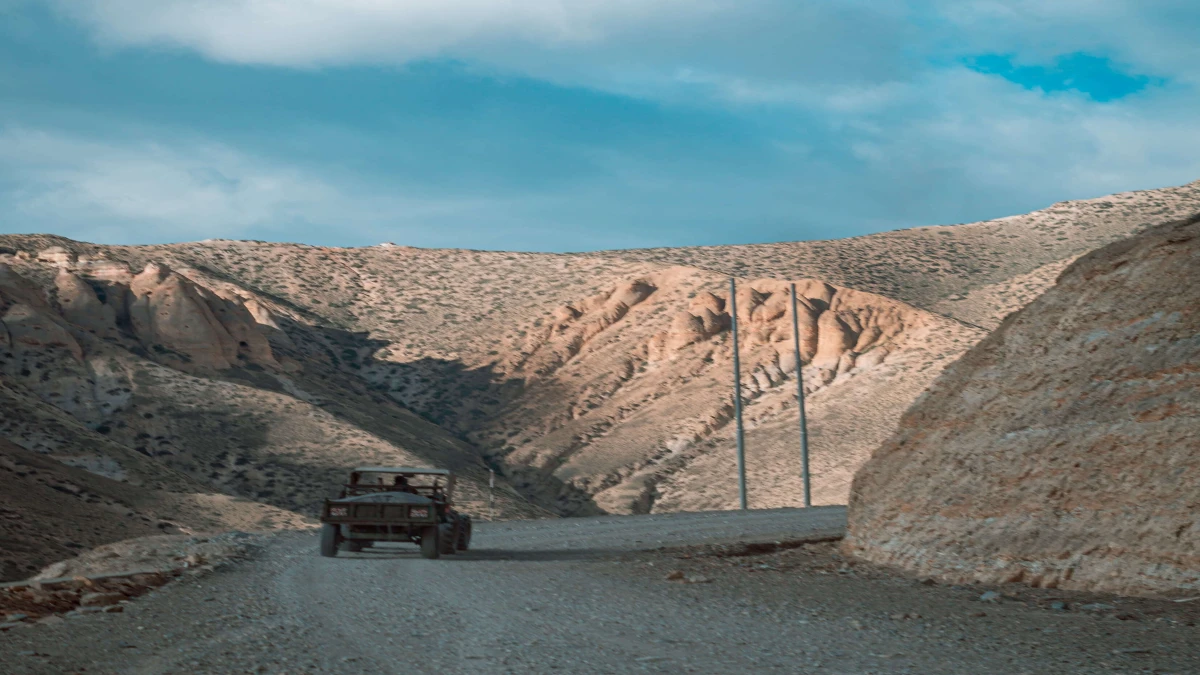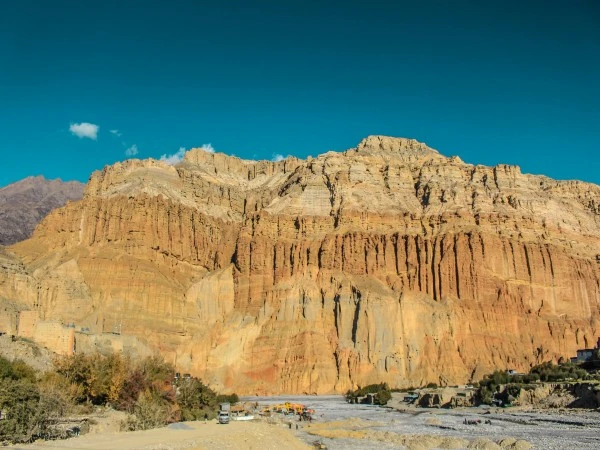Highlights:
- Mustang’s land is not lush and green. It’s raw. It is totally different from other treks and has dry cliffs, deep canyons, and a dramatic Himalayan rain shadow terrain.
- Trek in May or early June to witness the famous Tiji festival- colourful masked dances, chants, and drums echoing off ancient walls.
- On the route, you can see stunning views of Nilgiri, Dhaulagiri, and Annapurna.
- Lo Manthang, a beautiful walled city in Upper Mustang. Ancient Tibetan architecture, a royal palace, and a strong cultural heritage are everywhere.
- Trek in Mustang provides peace, with fewer tourists, and more space. You’ll get to walk in silence.
- Visit Muktinath temple, a sacred temple for both Hindus and Buddhists. This place somehow feels both ancient and alive.
- Explore the beauty of Pokhara. Chill by lakes, explore caves, and enjoy views of the Mountains.
Upper Mustang Trek Overview
Upper Mustang Trek is one of the most unique and unforgettable treks you can do in Nepal. It’s not like other treks that have usual lush and green trails. This one is different, which takes you behind the Himalayas into a dry and desert-like land. Completely different vibe. Feels like you’re stepping into a different world.
The Mustang kingdom is also known as “Last Forbidden Kingdom”. It has a story that makes you listen all day. This Kingdom started in the 15th century, with Lo Manthang as its capital. Even after being a part of Nepal, Mustang had its own king who used to rule in the 18th century. But when Nepal became a republic, the king of Mustang also lost his official title. Still, you can feel the royal vibe in the culture, buildings, and traditions of Mustang. The royal palace still stands, proud and mysterious, with rich Tibetan culture waiting for you to discover it.
Trekking here in Mustang is like walking through a living history book. Every step, every monument, every cliff tells a story. The landscape is wild and raw with desert plains, crazy cliffs, deep canyons, and rock formations bursting with colour. And then comes Lo Manthang- the crown jewel. Also home to ancient treasures, royal history, and epic mountain views of Annapurna, Dhaulagiri, and Nilgiri. Along the way you’ll find monasteries, Buddhist gumbas, and if you travel in May or early June, you can also witness Tiji festival. But advance booking must be done to see Tiji festival.
Since Upper Mustang is a restricted area. You need a special permit to trek here. So, it hasn’t changed much. Everything is pure, untouched, rough, and real. This is exactly why people love this place.
The adventure starts with the scenic drive or flight from Kathmandu to Pokhara. In Pokhara, you can take a moment to enjoy the lakes and mountains. Then, catch a flight to Jomsom, which is also known as the gateway to Upper Mustang. From Jomsom, our trek begins at Kagbeni, a village with culture and history, right at the edge of the restricted zone. After resting there, you hike to Chele and then on to Syangboche, passing through high mountains like Taklam La and Yamada La. You’ll explore places like Ghar Ghumba before reaching the walled city of Lo Manthang. On the way back, you’ll pass through Drakmar, Ghiling, and Chhusang, and then finally visit the sacred Muktinath Temple, holy for both Hindus and Buddhists.
Upper Mustang trek is not just a walk, it’s a story you live. Every wall, every trail, and every prayer flag tells a story. This place shows you a different side of Nepal that you’ll never forget. It’s a journey that stays with you for a lifetime.
Himalayan Partner offers a thoughtfully designed Upper Mustang Trek package that promises the best Himalayan adventure. Bookings are open now for 2026 and 2027, and yes, we’re happy to customize the itinerary based on your schedule, fitness level, and budget. Whether you’re looking for a cultural experience, scenic landscapes, or spiritual highlights, we’ll shape the journey to suit you. For more details, feel free to contact us-we’re here to help you plan the trek that fits you just right.
What are the Religions and Cultural Festivals of Upper Mustang
Upper Mustang, often called the “Last Forbidden Kingdom”, is deeply influenced by Tibetan Buddhist culture. You can feel it everywhere. In the old monasteries, the faded prayer flags, the mani walls stacked with carved stones. There are chortens too. Small, white-washed monuments are scattered across the landscape like quiet guardians. Most people here follow Tibetan Buddhism but some still practice the ancient Bon religion, the religion that came before Buddhism. This coexistence of faiths adds to the cultural richness of the region.
One of the most significant cultural events in Upper Mustang is TijiFestival, held annually in Lo Manthang around May or early June. It is a three-day event that tells the story of Dorje Jono, a deity who defeats a demon to restore peace. Monks perform colourful masked dances, and people from nearby villages gather in traditional dress. The festival is both a spiritual event and a joyful cultural gathering for the local community. Another popular festival is the Yartung Festival, celebrated in places like Muktinath and Jomsom. It takes place in August and includes fun events like horse racing, archery, singing, and dancing. It is a time of joy, community gathering, and honouring local traditions.
These festivals highlight the strong religious faith of the people and help to preserve the unique culture of Upper Mustang. These are the living memories for the locals of Mustang. Through vibrant dances, rituals, and gatherings, locals pass down their beliefs and customs from one generation to the next.
Who can do Upper Mustang Trek and how to prepare for this trek
The Upper Mustang Trek isn’t an average walk. It’s wild. Remote. A little raw. And absolutely worth it, if you’re up for it. This one is for the adventurous trekkers. This trek suits people who are comfortable with high altitudes and those who don’t mind walking 5 to 7 hours a day on rocky and uneven trails. Age doesn’t matter much for this trek. People in their 20s do it, so do people in their 60s. As long as you’re healthy, you’re good to go. And if you’re curious about ancient Tibetan-Buddhism cultures, lost caves, and old mountains, then you should definitely try this trek. Also, be mentally ready since it is an isolated area with limited modern facilities, so a positive mindset will help you to enjoy the experience fully.
Preparation really matters for this trek. So, focus on building your endurance and core strength by doing some cardio exercises like jogging, cycling, and running. Adding aerobic exercises to your routine can help you stay more balanced when trekking over rugged terrain. Start by taking some easy and short hikes on weekends. Also, the weather is tricky sometimes, so check the forecast. Make a rough plan in your head. But don’t expect it all to go smooth. Things change fast in the mountains. It may not always go perfectly, but that’s what makes your trip adventurous.
Why are Permits Required for the Upper Mustang Trek?
Upper Mustang isn’t just some random trekking spot in Nepal. It’s different, special, and protected for a reason. Back in 1992, this region was completely off-limits to foreigners. And even now, access is carefully controlled. Nepali government has marked it as a restricted area. This policy was introduced to protect its fragile Tibetan-influenced culture, untouched landscapes, and sensitive border area near Tibet.
Trekking in Upper Mustang requires two main permits:
- Restricted Area Permit (RAP)
- Annapurna Conservation Area Permit (ACAP)
These permits also help to limit the number of tourists so that the area doesn’t get overcrowded or damaged by overtourism. The money collected from these permits is used for local community development, conservation work, and trail maintenance. This system ensures that it preserves the ancient traditions, monasteries, and the lifestyle of the people living in this remote Himalayan region, while allowing trekkers to enjoy a culturally rich and environmentally responsible travel experience. Also, one thing you should know: solo trekking isn’t allowed in Upper Mustang. You have to be in a group of at least two people, and you must have a licensed guide with you.
Upper Mustang Trek Cost - 2026 & 2027
| Category | Details |
|
Trek Duration |
16 Days / 15 Nights |
| Cost (Per Person) |
USD 2,200-2,500, averaging USD 2,300 per person, which includes:
|
| Permit |
|




.webp)

.webp)
.webp)
.webp)
.webp)
.webp)
.webp)
